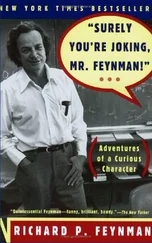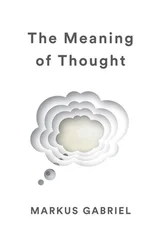On the other hand, the thing is quantitative. The question is how much is not good? You can play games and show that you will kill 10 million people in the next 2000 years with it. If I were to walk in front of a car, hoping that I will have some more children in the future, I also will kill 10,000 people in the next 10,000 years, if you figure it out, from a certain way of calculating. The question is how big is the effect? And the last time … (I wish I had—I should, of course, have checked these figures, but let me put it differently.) The next time you hear a talk, ask the questions which I point out to you, because I asked some questions the last time I heard a talk, and I can remember the answers, but I haven’t checked them very recently, so I don’t have any figures, but I at least asked the question. How much is the increase in radioactivity compared to the general variations in the amount of radioactivity from place to place? The amounts of background radioactivity in a wooden building and a brick building are quite different, because the wood is less radioactive than the bricks.
It turns out that at the time that I asked this question, the difference in the effects was less than the difference between being in a brick and a wooden building. And the difference between being at sea level and being at 5000 feet altitude was a hundred times, at least, bigger than the extra radioactivity produced by the atomic bomb testing.
Now, I say that if a man is absolutely honest and wants to protect the populace from the effects of radioactivity, which is what our scientific friends often say they are trying to do, then he should work on the biggest number, not on the smallest number, and he should try to point out that the radioactivity which is absorbed by living in the city of Denver is so much more serious, is a hundred times bigger than the background from the bomb, that all the people of Denver ought to move to lower altitudes. The situation really is—don’t get frightened if you live in Denver—it’s small. It doesn’t make much difference. It’s only a tiny effect. But the effect from the bombs is less than the difference between being at low level and high level, I believe. I’m not absolutely sure. I ask you to ask that question to get some idea whether you should be very careful about not walking into a brick building, as careful as you are to try to stop nuclear testing for the sole reason of radioactivity. There are many good reasons that you may feel politically strong about, one way or the other. But that’s another question.
We are, in the scientific things, getting into situations in which we are related to the government, and we have all kinds of lack of honesty. Particularly, lack of honesty is in the reporting and description of the adventures of going to different planets and in the various space adventures. To take an example, we can take the Mariner II voyage to Venus. A tremendously exciting thing, a marvelous thing, that man has been able to send a thing 40 million miles, a piece of the earth at last to another place. And to get so close to it as to get a view that corresponds to being 20,000 miles away. It’s hard for me to explain how exciting that is, and how interesting. And I’ve used up more time than I ought.
The story of what happened during the trip was equally interesting and exciting. The apparent breakdown. The fact that they had to turn all the instruments off for a while because they were losing power in the batteries and the whole thing would stop. And then they were able to turn it on again. The fact of how it was heating up. How one thing after the other didn’t work and then began to work. All the accidents and the excitement of a new adventure. Just like sending Columbus, or Magellan, around the world. There were mutinies, and there were troubles and there were shipwrecks, and there was the whole works. And it’s an exciting story. When it, for example, heated up, it was said in the paper, “It’s heating up, and we’re learning from that.” What could we be learning? If you know something, you realize you can’t learn anything. You put satellites up near the earth, and you know how much radiation you get from the sun . .. we know that. And how much do they get when they get near Venus? Its a definitely accurate law, well known, inverse square. The closer you get, the brighter the light. Easy. So it’s easy to figure out how much white and black to paint the thing so that the temperature adjusts itself.
The only thing we learned was that the fact that it got hot was not due to anything else than the fact that the thing was made in a very great hurry at the last minute and some changes were made in the inside apparatus, so that there was more power developed in the inside and it got hotter than it was designed for. What we learned, therefore, was not scientific. But we learned to be a little bit careful about going in such a hurry on these things and keep changing our minds at the last minute. By some miracle the thing almost worked when it was there. It was meant to look at Venus by making a series of passes across the planet, looking like a television screen, twenty-one passes across the planet. It made three. Good. It was a miracle. It was a great achievement. Columbus said he was going for gold and spices. He got no gold and very little spices. But it was a very important and very exciting moment. Mariner was supposed to go for big and important scientific information. It got none. I tell you it got none. Well, I’ll correct it in a minute. It got practically none. But it was a terrific and exciting experience. And in the future more will come from it. What it did find out, from looking at Venus, they say in the paper, was that the temperature was 800 degrees or something, under the surface of the clouds. That was already known. And it’s being confirmed today, even now, by using the telescope at Palomar and making measurements on Venus from the earth. How clever. The same information could be gotten from looking from the Earth: I have a friend who has information on this, and he has a beautiful map of Venus in his room, with contour lines and hot and cold and different temperatures in different parts. In detail. From the earth. Not just three swatches with some spots of up and down. There was one piece of information that was obtained—that Venus has no magnetic field around it like the earth has—and that was a piece of information that could not have been obtained from here.
There was also very interesting information on what was going on in the space in between, on the way from here to Venus. It should be pointed out that if you don’t try to make the thing hit a planet, you don’t have to put extra correcting devices inside, you know, with extra rockets to re-steer it. You just shoot it off. You can put more instruments in, better instruments, more carefully designed, and if you really want to find out what there is in the space in between, you don’t have to make such a to-do about going to Venus. The most important information was on the space in between, and if we want that information, then please let us send another one that isn’t necessary to go to a planet and have all the complications of steering it.
Another thing is the Ranger program. I get sick when I read in the paper about, one after the other, five of them that don’t work. And each time we learn something, and then we don’t continue the program. We’re learning an awful lot. We’re learning that somebody forgot to close a valve, that somebody let sand into another part of the instrument. Sometimes we learn something, but most of the time we learn only that there’s something the matter with our industry, our engineers and our scientists, that the failure of our program, to fail so many times, has no reasonable and simple explanation. It’s not necessary that we have so many failures, as far as I can tell. There’s something the matter in the organization, in the administration, in the engineering, or in the making of these instruments. It’s important to know that. It’s not worthwhile knowing that we’re always learning something.
Читать дальше











